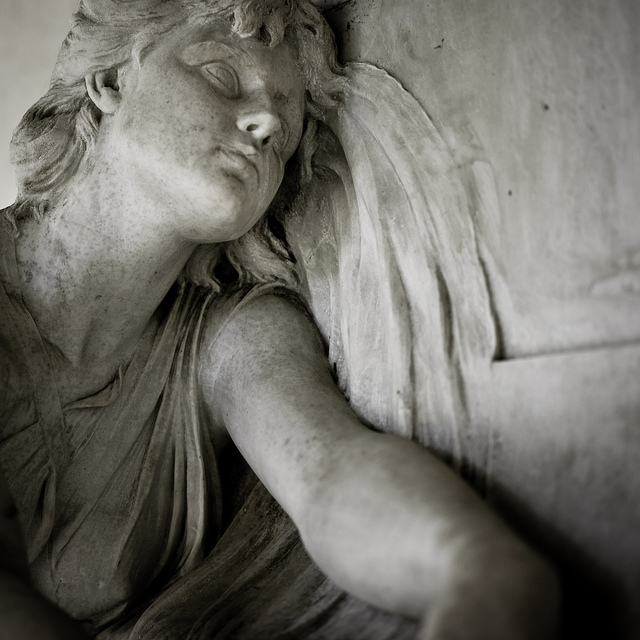My mother died 24 years ago.
It is odd to realize that she has been absent from my life longer than she was actually in it.
It doesn’t seem possible, really.
Last month as I rolled past my 47th birthday, it dawned on me that my mom was just four years older than I am now when she passed away. Her first encounter with breast cancer occurred when she was only 44. My mother never seemed old to me, her brown hair was only just beginning to turn grey at her temples, and as I march steadily on towards 50 (gods willing) it seems to me that she was just coming into the best years of her life.
Every so often she appears in a dream, from which I nearly always wake feeling tender and emotional—overjoyed at having seen and spoken with her again, while simultaneously gutted that she is really still gone. Forever.
I’m not in the habit of dwelling on my own mortality, but I do think of it. Frequently, I suppose. Partly this is due to the fact that my mother exited my life when I was 21, and I realized then that life was short and precious. And partly it’s because I make it a daily practice to savor the simple pleasures of life, never knowing how long I have to do so.
A couple weeks ago, I wrote a post that centered on a 19th-century Japanese bud vase that belonged to my mother. I’m looking at that ornately carved little vase now as I sit and write. It is one of several mostly worthless treasures I’ve placed on the sills of the front windows of this little cottage: a couple of ornately woven bird nests, a small golden citrine crystal, a deer vertebra, a beeswax candle, a delicate wooden hummingbird hovering above its young in a nest, and a two-inch black figurine of a curvaceous earth goddess.
I often sit by these windows for long hours, comfortably seated in an antique chair beside a narrow wooden table, my fountain pen scrawling across the white expanse of notebook or marking up the printed pages of a manuscript I am editing. Occasionally I glance at the windowsill’s rustic ornaments nearly within reach, and every so often I turn my gaze through the thin glass to observe the little birds animatedly feasting on yellow millet I’ve trailed along the railing of the deck next to the bistro table.
There, my eye is inevitably drawn just a bit further to The Grandmother, a venerable bistro. How long has she stood there nobly guarding the front gate, I wonder.
Far older than the cottage now sheltered by her outstretched limbs, her years dwarf my modest life and my mother’s combined.
The tree is a beautiful being whose rough grey trunk just slightly twisted, spiraling imperceptibly as it grows—not only because Earth spins on its axis (approximately 850 mph at this northern latitude), but because all life grows in a spiral. Straight lines do not exist in nature, a simple truth that becomes evident if our eyes are open and we are paying attention—a useful and powerful reminder for our own lives.
Despite modern society’s obsession with goals, forward linear direction, notions of ‘progress’, and the shortest route possible, life is really an arc and spiral. It meanders. Laws of nature and cosmic orbits aside, our earthbound journeys are rarely as straight as we may have planned, and seldom do they lead us to where we project. There is a certain grace in that, I think. A deeper, unguessed at and altogether mysterious intelligence guiding the currents of life.
Call it Fate. Or destiny.
Or simply chance, if you’re a skeptic.
I certainly never expected to be sitting here on the California coast, writing this column.
What I do know is that the spiraling journey of life is relatively short and utterly precious. Yet most of us are so trapped in the noisy confines of our heads that we’re entirely missing the show—the sensual experience of being embodied on this blue-green jewel of a planet (deeply troubled as it seems right now). What will each of us do and leave behind to help make the world a better place?
As I’ve often set forth in these posts, beauty is everywhere , even on a grey city street.
Our task, if you will, is to notice, to pause, to connect with some bit of nature and realize that it is us. We are never separate or apart from our environment, the field of living intelligence in which we are continually steeped, rather it is a part of us.
Life is a miracle—albeit sometimes a brief one—and we are participants, conscious or not.
As others have written far more eloquently, embracing our mortality dramatically increases the value of the moment.
Soul Artists deeply savor life. They appreciate beauty and create it in their daily existence—not simply in their surroundings, or in what they bring to the table, but also in their heart-centered way of seeing and experiencing the ‘more-than-human’ world.
Perspective is everything.
Kindness, too, that nurturing word to our beloved, the supportive gesture or action—extended also to the place where we dwell and its inhabitants, human and other.
I wonder, in this moment, what simple thing(s) awaits your gaze or touch, your lingering appreciation?
Perhaps it is the soft morning light of the pastel-hued sky, the screeching scrub jay on the wooden fence, a handwoven textile of richly-dyed wool, the orchid with its dark tongues of leaves that blooms elegantly in the kitchen window, or the enticing aroma of crusty bread drawn warm from the oven.
However many days may be granted to us, we can each learn to celebrate the simple, natural beauty of things as a daily path of practice. One day, perhaps soon, we must leave it all behind. With no small measure of grace, hopefully our last thought will be this: what an achingly beautiful, sensual and delicious life it was.
That would be grace, indeed.
Author: L. R. Heartsong
Editor: Renée Picard
Photo: martin at Flickr












Read 1 comment and reply